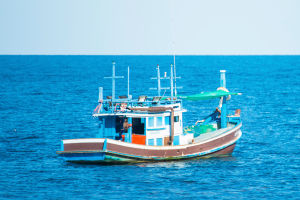Antarctica may look like a barren land of endless snow and ice, but beneath its frozen surface and along its icy coastlines, a surprisingly diverse collection of wildlife thrives. From large, blubbery seals to lively penguins and wandering seabirds,
Antarctica’s remote ecosystem is filled with animals uniquely adapted to extreme cold and isolation. Let’s dive into the wild world of Antarctic animals that live in one of the harshest environments on Earth.
The Majestic Emperor Penguin
Emperor penguins are the tallest and heaviest of all penguin species, and they call Antarctica home. These hardy birds breed in the deep winter, braving temperatures that dip below -60°C to raise their chicks. Their remarkable adaptations, including a thick layer of blubber and a dense layer of feathers, keep them warm against the relentless cold. Known for their strict social structure and close-knit colonies, emperor penguins huddle together for warmth, creating a mesmerizing sight on the icy plains. Penguins are perhaps the best-known residents of Antarctica, symbolizing resilience in the face of harsh conditions.
Seals of Antarctica - The Ice-Dwelling Giants
Antarctica is home to several species of seals, each uniquely adapted to life in freezing waters. The crabeater seal, despite its name, mainly consumes krill rather than crabs. Its specialized teeth help it filter krill from the water, similar to how some whales feed. Another fascinating species is the Weddell seal, which has an incredible diving ability, staying underwater for up to 80 minutes. These seals live in the southernmost regions and are known for maintaining breathing holes in the ice throughout winter, which they do by gnawing at the ice - truly impressive feats of adaptation.
Albatross and Skuas: The Birds of the Southern Seas
Not all of Antarctica’s wildlife is bound to the snow; some take to the skies. The wandering albatross, with a wingspan reaching up to 11 feet, is one of the largest birds on Earth and spends most of its life gliding over the ocean. Albatrosses return to Antarctica's coasts to breed, often after spending years at sea. The skua, another bird often spotted in Antarctica, is known for its aggressive nature, particularly during the breeding season when it fiercely protects its territory. Skuas are also opportunistic feeders, known for snatching penguin eggs and even small chicks when the chance arises.
Underwater Wonders: Orcas and Other Whales
Antarctica’s coastal waters are frequented by various whale species, including orcas and humpback whales. Orcas, or killer whales, are apex predators and hunt in packs, which gives them an advantage in these nutrient-rich waters. They primarily feed on fish, squid, and occasionally seals, exhibiting complex hunting strategies that demonstrate their intelligence. Humpback whales, on the other hand, migrate to Antarctic waters to feast on krill in the summer months, building up their fat reserves for winter.
Tiny Titans: Krill and Their Role in the Food Chain
Krill may be tiny, but they play an enormous role in Antarctica’s ecosystem. These small crustaceans are the primary food source for many Antarctic animals, from penguins and seals to massive baleen whales. Each year, millions of tons of krill are consumed, forming the backbone of the Antarctic food chain. With changing environmental conditions, however, krill populations are under threat, which in turn impacts the animals that depend on them.
Antarctica’s wildlife is as resilient as it is unique, demonstrating nature’s adaptability in extreme environments. If you ever dream of visiting this icy continent, remember that you’ll be a guest in a delicate ecosystem. To preserve this awe-inspiring wilderness, travelers must follow strict guidelines, including maintaining a safe distance from wildlife and respecting protected areas. So, bundle up, bring your binoculars, and prepare to marvel at the wonders of Antarctica’s snowbound residents - but always tread lightly


